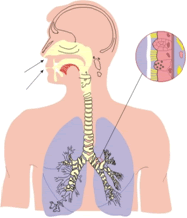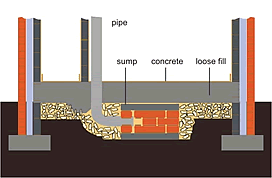Testing for radon
Radon surveys should be conducted in any workplace where its location and characteristics suggest that elevated levels may be found and significant exposures to employees and/or other persons are possible. Inexpensive surveys can be carried out by leaving small plastic passive detectors in rooms or occupied locations of interest.
Since even new buildings with protective measures may have high radon levels, employers must still test.
Experience has shown that radon concentrations in adjacent buildings, even adjoining ones, can differ greatly (for reasons including local geology, building design and usage), so measurement results from neighboring properties cannot be used in the risk assessment.
What will the test results mean?
Where the workplace measurements show annual average radon levels below 300 Bq/m3, as is the case for the majority of employers, then the only further action required is to decide when the risk assessment will be reviewed.
For occupied areas with levels above 300 Bq/m3, the employer may need to immediately take steps to manage occupational exposures pending any decision they may take to reduce the radon levels by engineered means. A Radiation Protection Adviser (RPA) with radon experience should normally be consulted about how best to manage radon exposures but, if the employer plans to introduce engineering controls to immediately reduce the radon exposures, they will also need to consult a specialist radon removal (remediation) contractor. The specialist will be able to advise on the most cost-effective engineered means of reducing radon levels. It is usually appropriate to continue monitoring in these areas at least until the reduction measures have been put in place, or to refine where the highest radon levels are located by monitoring additional rooms.
The seasonal adjustments applied by testing laboratories to measurements are normally good indicators of the annual average levels in buildings. It is good practice to consider methods of restricting the radon exposures immediately if the seasonally adjusted figures are significantly greater than 300 Bq/m3 and not wait for further measurements, as this would incur additional radiation doses to persons within those premises.



